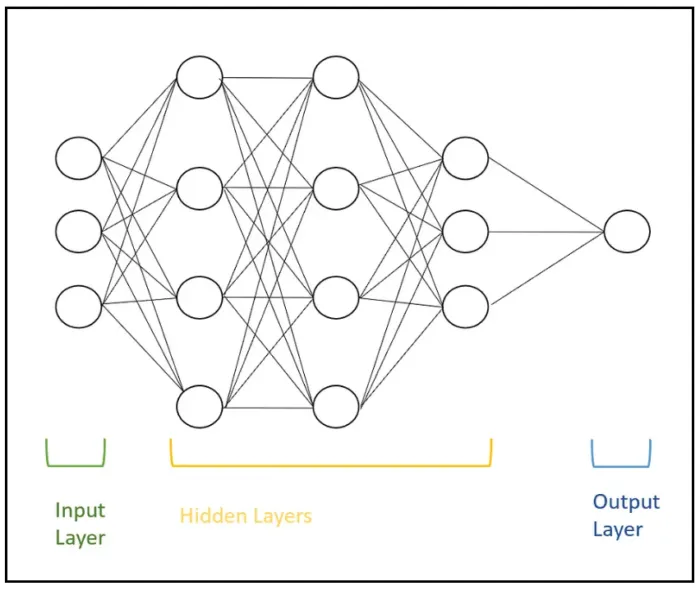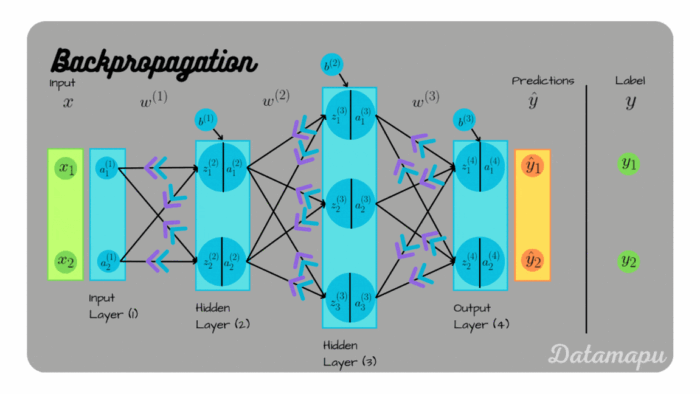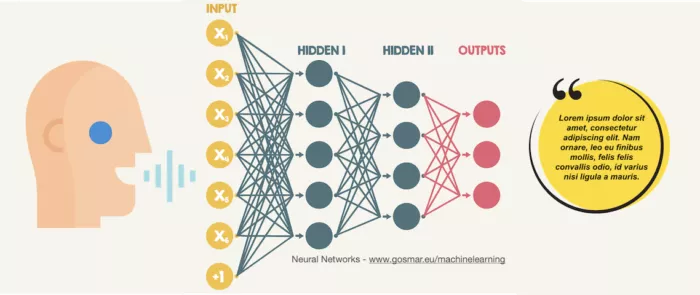How Does A.I. Actually Work (In Simple Terms For Founders, Marketers, & Non-Engineers)

Ever felt like AI is just too complex to understand? Yeah, me too. But guess what? It's not rocket science. In fact, it's simpler than you think.
As a kid, I always thought AI was something only geniuses could understand. Fast forward to now, and I realize it's just basic math and logic. Picture this: I was writing a sci-fi trilogy about AI, thinking it was all futuristic and complicated. Then I stumbled upon a video that broke it down, and I thought, 'Wait, that's it?' Turns out, AI is just a bunch of neurons and synapses, like our brains, but digital.
AI isn't some magic trick. It's all about simple math – addition, multiplication, and something called an activation function. Sounds fancy, but it's not.
According to studies, businesses using AI have seen a 40% increase in productivity. Imagine what it could do for you.
In this article, we'll break down how these digital brains work in a way that's easy to understand. You'll learn:
- The basic math behind their 'thought' process
- Different methods to train AI
- Practical applications that make neural networks so powerful for businesses
Ready to dive in? Let’s get started.
Ready to automate your business? We have available spots for our done-for-you service. Additionally, our current service will soon be integrated with our AI platform, Growbo. Sign up for the Run package or above and experience the power of Growbo.
How AI Works
At its core, AI uses something called neural networks. These are like tiny digital brains. Just like our brains have neurons and synapses, neural networks have layers of nodes connected by lines. These nodes and lines work together to process information and make decisions.
So, how does this digital brain work? It starts with an input layer, where data comes in. This data gets processed through hidden layers, where the magic (or math) happens. Finally, it reaches the output layer, where the AI makes a decision or prediction.
Neural networks learn by adjusting the connections between nodes. This process is called training. The more you train, the better it gets. AI can learn to recognize patterns, make predictions, and even play games.

Training Methods
Training neural networks is like teaching a dog new tricks, but instead of 'sit' and 'stay,' we're teaching the network to recognize patterns and make predictions.
Training involves adjusting weights and biases to minimize an error function. The key here is gradient descent, a method used to optimize parameters. When you relate it to business, gradient descent acts like a skilled consultant who guides the company through each adjustment, helping them incrementally improve their strategy. Just as the consultant provides expert advice to refine the campaign, gradient descent helps the neural network adjust its weights and biases, minimizing errors and optimizing performance over time. The goal is to find the best strategy, just as the neural network aims to achieve the lowest possible error.

One of the most important methods for training neural networks is backpropagation. It allows the network to learn from its mistakes and improve over time. Backpropagation is like a business's continuous improvement process.
Imagine a company that has just launched a new product. Initially, the product might not perform as expected in the market. To address this, the company collects feedback from customers. It also reviews performance metrics. Based on this feedback, the company makes changes to the product, marketing strategies, or sales tactics. Over time, these iterative adjustments help the product better meet customer needs and achieve greater success.

Another concept is online learning, where algorithms learn from sequentially arriving data points. It's like the network is constantly updating its knowledge base, staying sharp and ready for new challenges. Online learning in neural networks is like a business adapting to an ever-changing market.
Imagine a company that sells products in a dynamic industry where customer preferences and market conditions are constantly evolving. To stay competitive, the company needs to continuously gather and analyze new market data. Then it makes incremental changes to its offerings, strategies or practices.
Practical Applications
How is AI actually used in the real world? From your smartphone to your car, AI is making things smarter and easier.
Take a look at your phone. Ever wonder how it recognizes your face or voice? Yep, that's AI. It's called facial recognition and voice recognition, and it's pretty cool stuff. But it doesn't stop there. AI is also behind those recommendations you get on Netflix or Amazon.
1. Voice Recognition. Ever asked Siri or Alexa a question? Yep, that's neural networks at work. They help these virtual assistants understand what you're saying and come up with a response. It's like having a super-smart friend who never gets tired of listening to you.

2. Image Recognition. This is where neural networks really shine. They can look at a picture and tell you what's in it. Whether it's identifying a cat in your photo album or helping doctors spot diseases in medical images, neural networks are pretty good at playing 'I Spy.'

3. Complex Function Approximation. This is a fancy way of saying that neural networks can make predictions based on data. From forecasting the weather to predicting stock market trends, these digital brains are like crystal balls for the modern age.
4. Automating Repetitive Tasks. Neural networks can automate repetitive marketing and operational tasks, freeing up time for strategic activities. For instance, they can handle data entry, customer follow-ups, and even social media posting, allowing you to focus on higher-level decision-making.
5. Customer Segmentation. Neural networks can analyze customer data to create more accurate and effective customer segments, leading to targeted marketing campaigns. This means you can deliver personalized messages to the right audience, improving engagement and conversion rates.
Conclusion
AI is not just for tech experts—it's a powerful tool for everyone.
For entrepreneurs and marketers, it offers a game-changing opportunity to save time, boost productivity, and make smarter decisions. With AI handling repetitive tasks and providing valuable insights, you can focus on what really matters—growing your business.
AI is not as complex as it seems. It's just a tool that can handle tasks requiring human intelligence, like recognizing faces or predicting trends. Studies show that 50% of companies have adopted AI in at least one business function, and AI adoption has grown by 270% in the past four years.
Here are the main takeaways:
- AI uses neural networks, which are like digital brains. These networks process information through layers of nodes, making decisions based on data. This process is similar to how our brains work and involves simple math operations.
- AI learns through methods like backpropagation and online learning. These methods allow AI to improve over time, learning from mistakes and optimizing its strategies.
- Practical Applications: AI is used in various industries, from healthcare to finance to retail. It powers facial and voice recognition, task automation and customer segmentation.
AI saves time and money by handling repetitive tasks, boosts efficiency and productivity by analyzing data quickly, and helps make better decisions with data-driven insights.
So, why not take the next step? Try Growbo and experience firsthand how an AI-powered team of marketing pros can streamline your marketing and operations tasks.
Remember, the future of business is here, and it's powered by AI. Embrace it, explore its potential, and watch your business grow.
Keep Growin’, stay focused.

Image Credits:
1. https://medium.com/dataseries/understanding-the-maths-behind-neural-networks-108a4ad4d4db
2. https://blog.gopenai.com/understanding-of-gradient-descent-intuition-and-implementation-b1f98b3645ea
3. https://datamapu.com/posts/deep_learning/backpropagation/
4. https://hbhutada95.medium.com/design-of-image-recognition-214b1b0cbb52













